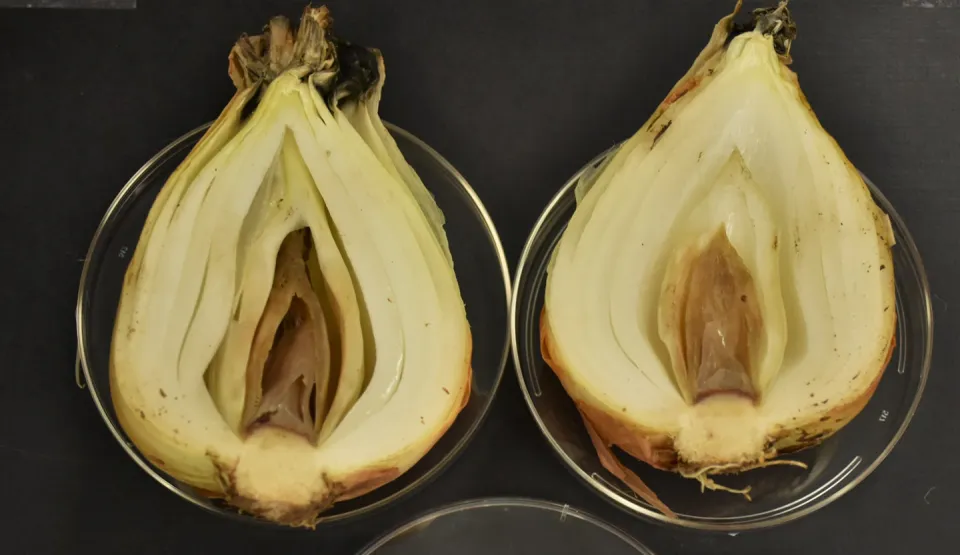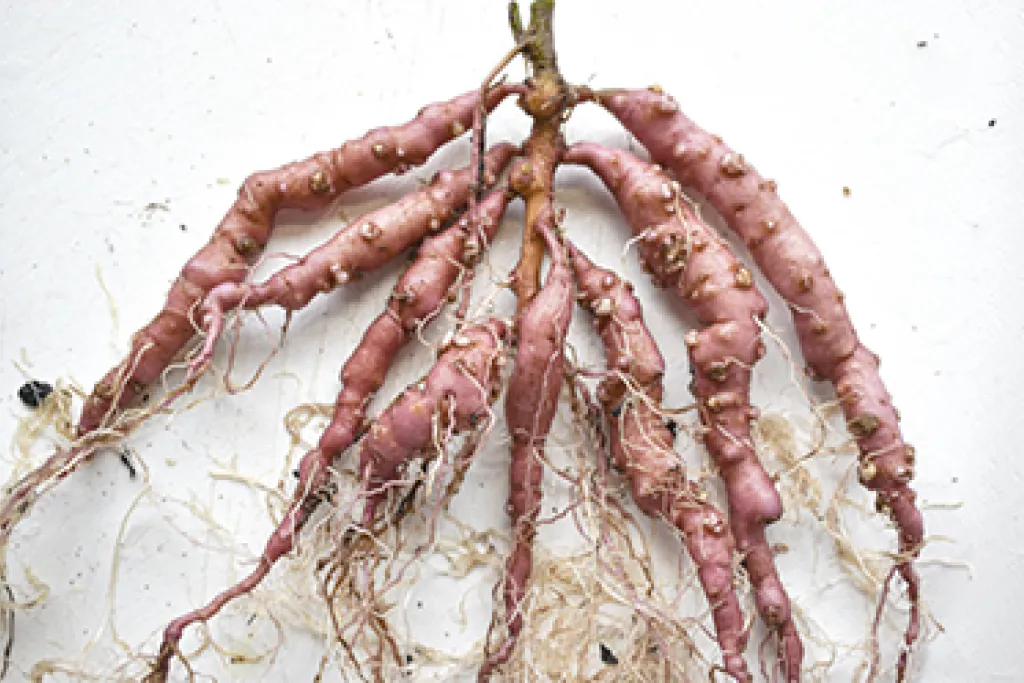The Specialty Crop Research Initiative (SCRI) promotes collaboration, open communication, the exchange of information and the development of resources that accelerate application of scientific discovery and technology to solving needs of the various specialty crop industries.
On Friday, Dec. 9, at 2 p.m. EST, NIFA staff will discuss the SCRI Request for Pre-Application requirements and provide technical assistance to applicants.
Across the nation, researchers and Extension specialists at Land-grant Universities funded by the program are addressing critical needs of the specialty crop industries, including conventional and organic food production systems. Fruits and vegetables, tree nuts, dried fruits, and horticulture and nursery crops, including floriculture comprise the bulk of specialty crops. Learn more about some of this NIFA-funded work below.
Reducing the Vulnerability of Growers to the Guava Root Knot Nematode
Guava root-knot nematode is a highly lethal root-knot roundworm species with the potential to devastate production of multiple crops in the southeastern United States. New resources and information are urgently needed to help farmers manage this aggressive pest that caused the collapse of Brazil’s guava industry.
This roundworm is particularly concerning as it can reproduce faster and be more aggressive than other nematode species. Additionally, it has a much wider host range, affecting watermelon, tomato, pepper, carrot, squash, cucumber, soybean, cotton and tobacco crops.
Over the last few years, this roundworm has spread across Florida, North Carolina, South Carolina and Puerto Rico, and is being monitored in Louisiana and Georgia. In North Carolina alone, it has been reported in 13 counties, causing the state to enact an interior quarantine on infested soil and sweet potato seed and slip.
In response, a team of researchers led by Clemson University is providing information and tools to assist growers in the southeastern United States with preventing and managing issues caused by this microscopic pest via a multi-state SCRI grant. Researchers are investigating sources of resistance, developing nematode-resistant germplasm and evaluating management strategies while educating the farming community about the nematode’s risks.
For commercial growers, researchers recommend growers have their fields regularly sampled for nematodes and actively monitor crops for symptoms, particularly root galling. If symptoms are present, farmers should have a nematode molecular DNA test performed. Home gardeners must also recognize the danger these pests pose to their gardens. Prevention is the best management, so it is vital for gardeners to purchase all seed, slips and soil from reputable sources. Roots of all transplanted plants should be inspected for galls, and if any symptoms are found, plants should be sent to a local plant disease diagnosis clinic for testing.
Stopping the Rot
Onion is the third most consumed vegetable in the U.S. behind tomato and potato. The per capita consumption of onions in America is about 20 pounds per year, an increase of 70% over the past 20 years. While onion is grown in at least 20 states, the majority of onions for commercial markets are produced in California, Colorado, Georgia, New Mexico, New York, Oregon, Texas and Washington, with a farm-gate value of $925 million and more than $70 million in added value after processing.
Led by Washington State University, the “Stop the Rot” project brings together 24 scientists from across the nation to research the complete system of bacterial diseases of onion. The aim is to develop practical, economically sound strategies for pathogen detection and management that will improve profitability and sustainability of onion production.

Recently, a team of Texas A&M AgriLife researchers in Uvalde identified a new pathogen while conducting a survey of bacteria in onions as part of the project. The bacterial species, Pseudomonas uvaldensis sp. nov., is now named for where it was found.
Identifying the new bacteria provides more information about late-season and potentially post-harvest bulb rots, which can significantly decrease yield quantity and quality. In addition, identification of the new species can provide insight to the plant disease challenges and the microbiome of not only onions, but potentially other vegetable crops, particularly those related to onion, such as garlic, leeks, scallions and chives.
Preliminary results from the project indicate that disease control measures such as crop rotation, insect-pest management and the use of surface, subsurface or drip irrigation instead of overhead sprinkler irrigation, would be effective in controlling the bacteria. In addition, researchers said proper curing of harvested bulbs and storage in cool, dry conditions, would help with disease control.
Top image: The most notable symptom of guava root-knot nematode is called galling, which appears as clumps of knots on the plant’s roots, or sometimes on the surface of root crops such as sweet potato, white potato and carrot. Credit: Clemson University.

